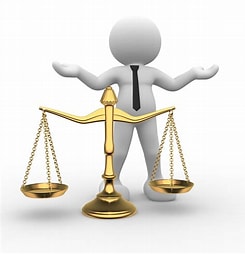Why Downselling Your Upsell helps to build life long customers The Counter-Intuitive Strategy That Builds Lifelong Customers. This has been a game changer
Post by Peter Hanley coachhanley.com
You've just launched what you thought was the perfect upsell sequence. Your customers loved your initial product, achieved great results, and seemed ready for the next level. However, instead of eagerly purchasing your premium upgrade, many of them simply vanished. Your analytics show a disturbing pattern: the very customers who achieved the best results with your first product are the least likely to buy your advanced offerings. Meanwhile, you're watching potential lifelong relationships dissolve just when they should be getting stronger, leaving you frustrated and confused about why success seems to drive customers away rather than deeper into your ecosystem.
This puzzling phenomenon affects countless business owners who misunderstand the psychology of customer success and satisfaction. Fortunately, there's a counter-intuitive strategy that not only solves this problem but actually transforms these potentially lost customers into your most loyal, long-term advocates.
Understanding the Success Satisfaction Paradox
First and foremost, successful customers often experience what psychologists call “goal satisfaction syndrome,” where achieving their desired outcome reduces their motivation to continue investing in related solutions. Consequently, the very success your product delivers can inadvertently signal to customers that they no longer need your help.
Moreover, customers who reach their initial goals frequently shift their focus to entirely different life areas, making your advanced offerings seem irrelevant to their current priorities. Additionally, the financial and time investment required for premium upsells can feel overwhelming to customers who believe they've already “graduated” from needing external support.
Furthermore, traditional upselling approaches often fail to acknowledge and celebrate the customer's achievements, instead immediately pushing toward the next challenge or level. Subsequently, this approach can make customers feel like their success wasn't enough, creating resentment rather than excitement about continued partnership.
The Psychology Behind Downselling Success
Meanwhile, downselling your upsell taps into powerful psychological principles that keep successful customers engaged without overwhelming them. Therefore, offering a lower-commitment, more affordable continuation option respects their achievement while providing ongoing value and connection.
Additionally, downsell offers create what behavioral economists call “loss aversion prevention” – customers who might walk away from expensive upgrades will often accept smaller, ongoing investments to maintain their progress and connection with your brand. Subsequently, these smaller commitments keep the relationship alive and create multiple future opportunities for increased engagement.
Furthermore, downselling signals that you understand and respect your customers' success journey rather than treating them as perpetual cash sources. Consequently, this approach builds tremendous goodwill and trust that pays dividends in long-term customer lifetime value and referral generation.
Creating Irresistible Downsell Offers
In addition, effective downsell strategies focus on maintenance, community, and continued support rather than dramatic new achievements. Therefore, instead of pushing advanced training or complex systems, successful downsells offer simple ways to maintain progress and stay connected with your expertise.
Moreover, these offers might include monthly check-ins, access to ongoing Q&A sessions, exclusive community membership, or simplified maintenance tools that require minimal time and financial investment. Additionally, positioning these downsells as “success maintenance” or “achievement protection” frames them as logical next steps rather than sales attempts.
Subsequently, customers who accept these downsell offers remain in your ecosystem, continue receiving value, and naturally become candidates for future upsells when their circumstances or goals change. Furthermore, they often become your best referral sources because they associate your brand with their success.
Building Long-Term Customer Relationships
Furthermore, downselling creates multiple touchpoints that strengthen customer relationships over time rather than ending them after initial goal achievement. Consequently, customers who might have disappeared after reaching their first milestone remain engaged and connected to your brand for months or years.
Moreover, these ongoing relationships provide invaluable feedback about your customers' evolving needs, challenges, and desires, enabling you to create new products and services that truly resonate with your audience. Additionally, long-term customers become case studies and testimonials that dramatically improve your marketing effectiveness and credibility.
Subsequently, the revenue from multiple years of smaller downsell purchases often exceeds the one-time income from expensive upsells, while creating much more predictable and sustainable business models. Furthermore, satisfied long-term customers frequently return for premium offerings when their life circumstances change or new goals emerge.
Implementing the Downsell Strategy
Most importantly, successful downselling requires understanding your customers' success patterns and designing continuation offers that feel natural and valuable rather than manipulative. Therefore, analyze your customer journey to identify the points where engagement typically drops and create bridges that maintain connection.
Additionally, effective downsell timing typically occurs 30-60 days after customers achieve their initial goals, when the excitement of success begins to fade but the value of your guidance remains fresh in their memory. Subsequently, framing these offers as ways to “protect your investment” or “maintain your momentum” resonates strongly with success-oriented individuals.
Moreover, downsell offers should require minimal decision-making energy and provide immediate, ongoing value rather than promising distant future benefits. Consequently, simple monthly memberships, quarterly check-ins, or ongoing resource access work better than complex, commitment-heavy programs.
The Compound Effect of Customer Retention
Ultimately, downselling your upsells creates a compound effect where customer retention drives exponentially greater lifetime value than any single high-ticket sale. However, implementing this strategy requires understanding customer psychology, designing appropriate offers, and maintaining long-term relationship focus rather than short-term revenue maximization.
Consider this: while a $2,000 upsell might generate immediate income from 10% of eligible customers, a $47 monthly downsell accepted by 60% of customers generates more revenue over two years while building stronger relationships and creating multiple future opportunities.
.
